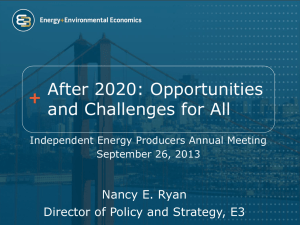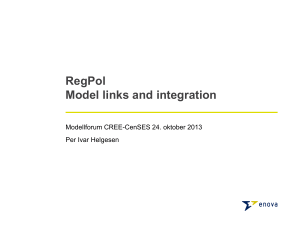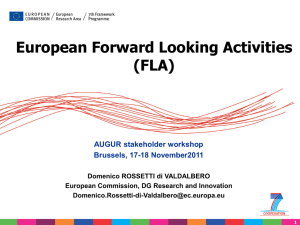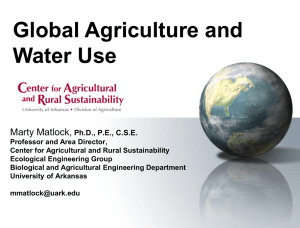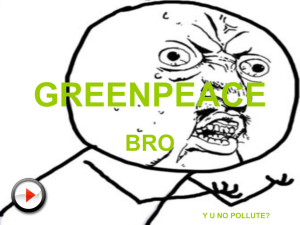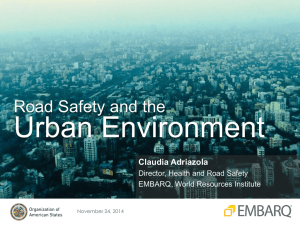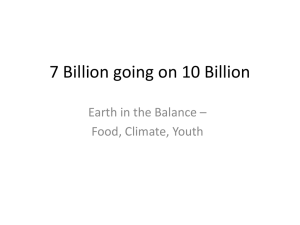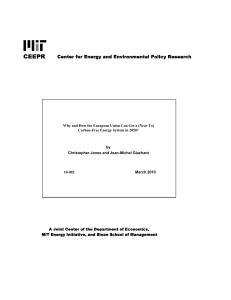Germany_EnergyScenario
advertisement
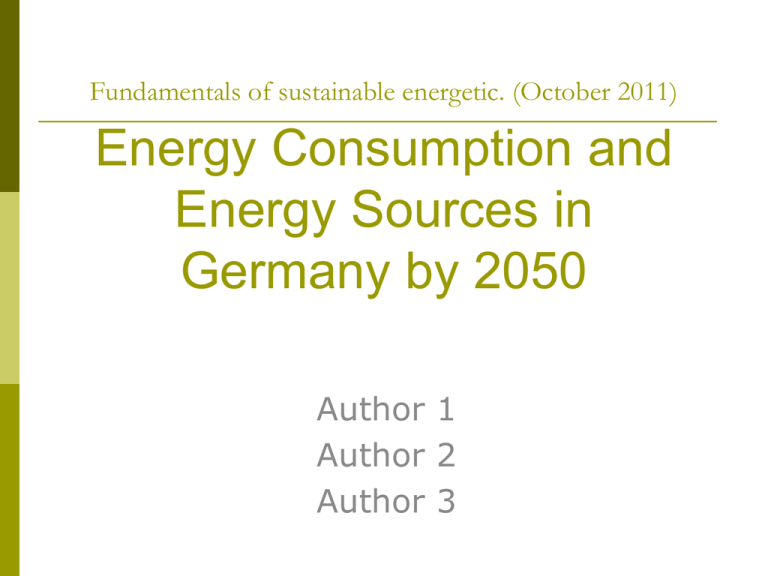
Fundamentals of sustainable energetic. (October 2011) Energy Consumption and Energy Sources in Germany by 2050 Author 1 Author 2 Author 3 Status quo Germany today Total area: 357,012m² Population: 82 mill. GDP 2.4trillion in 2010 Electricity imports: 42.1 TWh Electricity exports: 59.1 TWh Energy resources Coal Oil Natural gas Nuclear Energy Renewable Energy Reduction of Energy Consumption Use of all available eco-friendly technologies Lights. Reducing of street lights, eliminate lightsadvertisement for reduction of energy consumption and light-pollution. Give feed-back on energy consumption, at least a monthly bill Enable the consumer to level-out the energy consumption over the day to make use of smart grids Combustion of fossil fuels for heating is inefficient as electrical heating Transport I Tailormade transportation according to the needs and the traffic density (rush hour – rural areas) Cities: public transport, supported by measures like city-toll (maut) Rural area:Higher efficiency of infrastructure reduces the need of transportation, no need for long distances. In rural areas, efficient cars can be justified Transport II 90% reducing of fossil fuel demand by new technologies and efficiency for cars (1-3liter cars, electro cars, etc.) Electro cars used also as electricity storage Reduce energy need by decreasing of traffic Offer transport resources at the point of need, i.e. car sharing, public transport, bicycles Get away from the attitude one consumer-one car. That reduces the problems of stationary traffic Housing Home heating. Zero energy homes (ZEH) – good insulation, solar or/and horisontal ground source heat pumps for water and room heating, solar or/and wind electricity production by house, controllers for energy and water consumption at homes Electricity. Connect homes to electricity system – use energy from system if needed and donate energy to the system if it is overproduced by house Water. Rain water collection for household needs Create incentives for smart use of energy, i.e. flexible tarifs Industry Demographic change leads to decrease of industry production Energy intensive industry sectors decline Decrease of production (there are too many things produced we don´t really need) Introduce more measures, based on the footprint of a production. I.e. ease investment in greener technologies through tax-legislation Food. Use local food. Stop food waste and so reduce its production and transportation energy needs. Save territory for wild life. Paper. Eliminate paper advertisement, packaging. Save forests and CO2/O2 balance. People I Parks. Plant more parks and forests to reduce CO2 amounts, to clean up the air Waste. Waste sorting and their reuse or recycling Introduce a master plan to make the people think green in their decisions give a feed-back in their taken decisions and make them benefit financially from it People II Introduce the ecological footprint in tax-legislation Do the right thing and benefit from it Impose certain taxes on efficient usage of energy. Higher taxes on fossil fuels and unjustified usage Demography I ~15 Million people less until 2050 In Germany by 2050, the years with a strong birth rate are becoming erased due to their age Introduce measures to help supporting the scarcely populated regions and optimize it under energysaving aspects Demography II Industries with high energy consumption are decreasing generally in Germany and are not labour intensive Change to the service industry, which is labour intensive solves the labour market problem Environmental- and labour market issues are disconnected How Much Energy Does Germany Need by 2050 Natural- and biogas for “high value energy” – industry Heat pumps, geothermal and solarthermic sources for “low value energy” – housing, service sector transportation Source: Greenpeace: PlanB 2050 – Energiekonzept für Deutschland Source: Greenpeace: PlanB 2050 – Energiekonzept für Deutschland Possible Energy Sources Solar PV. Even more potential than in the following graph Solar heating. Especially for housing Ground source heat pumps for housing limited by regional access Wind. Increase mainly in offshore wind parks Hydropower. Nearly constant amount of power plants “Sustainable” biomass. No new areas of cultivation, but areas of compensation Source: Greenpeace: PlanB 2050 – Energiekonzept für Deutschland Conclusion There is no “right answer”, complex possibilities Changes are introduced by the people and require a change in attitude A master-plan for the introduction of new technologies according to the expected lifetime Close consideration of international collaboration (im- and export) Smart grids and storage can contribute to the need of installed power plants References http://www.youtube.com/watch?v=wIgVvPEVznc Alex Steffen: The shareable future of cities (TED) http://www.bmwi.de/BMWi/Navigation/Energie/Statistikund-Prognosen/Energiedaten/gesamtausgabe.html Federal Ministry of Environment, Nature Conservation and Nuclear Safety http://www.greenpeace.de/fileadmin/gpd/user_upload/the men/klima/Plan_B_2050_lang.pdf Studie: Klimaschutz: Plan B 2050 – Energiekonzept für Deutschland http://www.bmu.de/files/pdfs/allgemein/application/pdf/en ergieszenarien_2010.pdf Studie: Energieszenarien für ein Energiekonzept der Bundesregierung

